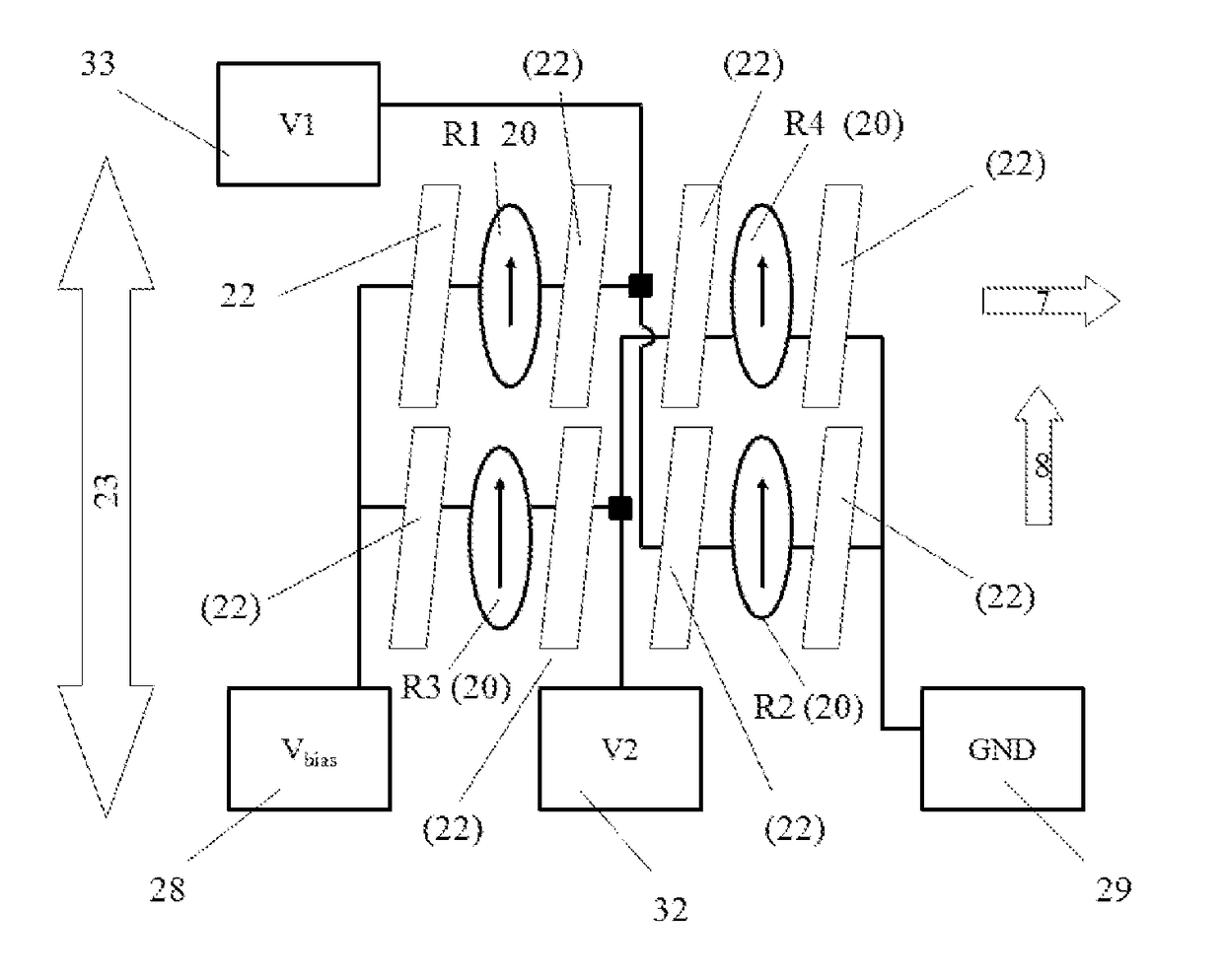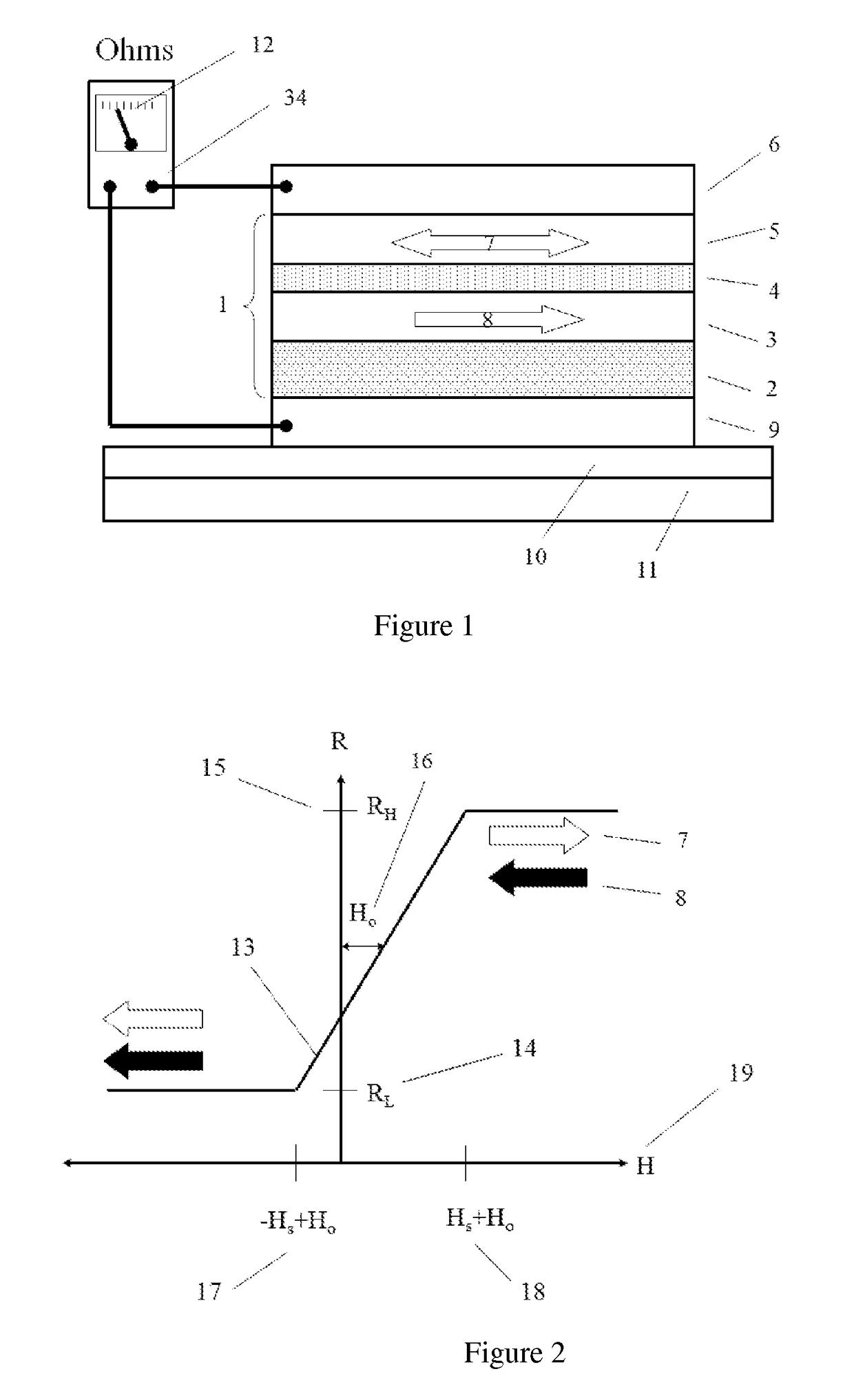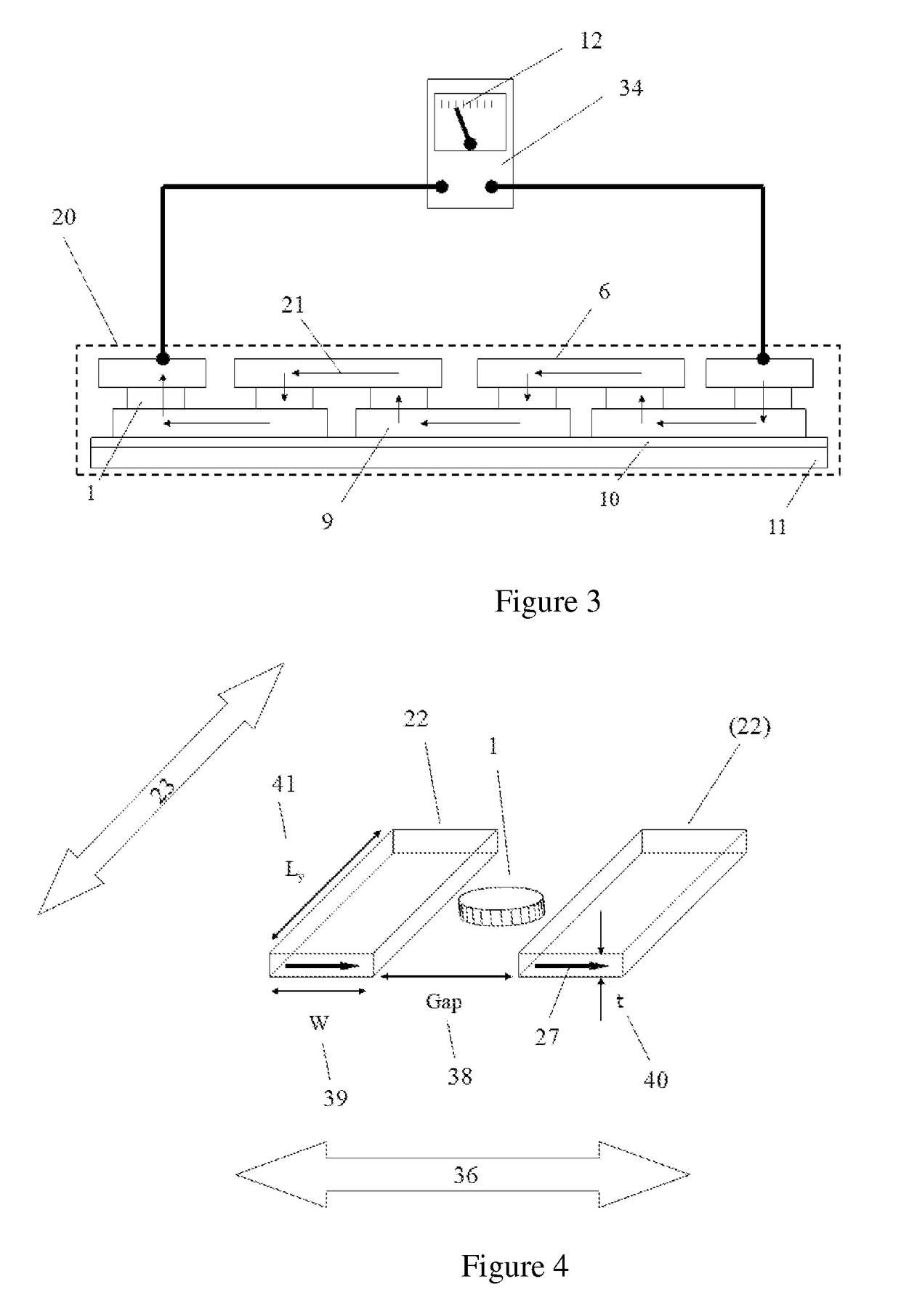Magnetoresistive magnetic field gradient sensor
a magnetic field gradient and magnetoresistive technology, applied in the direction of magnetic gradient measurement, reference comparison, instruments, etc., can solve the problems of increasing the size and weight of the sensor, reducing the linearity of the sensor, and hall elements generally have high power consumption, so as to achieve wide linear range, high sensitivity, and low power consumption
- Summary
- Abstract
- Description
- Claims
- Application Information
AI Technical Summary
Benefits of technology
Problems solved by technology
Method used
Image
Examples
Embodiment Construction
[0028]FIG. 1 is a drawing that illustrates the function of the various layers in an MTJ element. A MTJ element 1 generally includes an upper layer of a ferromagnetic or synthetic antiferromagnetic (SAF) 5, a lower ferromagnetic SAF layer 3, and a tunnel barrier 4 between the two ferromagnetic layers. In this configuration, the upper ferromagnetic (SAF layer) constitutes the magnetic free layer 5, in which the magnetic moment is free to change direction in response to the external magnetic field 7. The lower ferromagnetic (SAF layer) 3 is a fixed magnetic layer, because of its magnetic moment direction 8 is rigidly fixed in one direction, so under normal conditions will not change. Usually the rigidly fixed ferromagnetic layer (SAF layer) 3 is called the pinned layer. The pinned layer is usually adjacent to an antiferromagnetic layer 2. The MTJ stack is usually deposited on top of an electrically conductive bottom electrode layer 9, and the MTJ structure is often capped with a conduc...
PUM
 Login to View More
Login to View More Abstract
Description
Claims
Application Information
 Login to View More
Login to View More - R&D
- Intellectual Property
- Life Sciences
- Materials
- Tech Scout
- Unparalleled Data Quality
- Higher Quality Content
- 60% Fewer Hallucinations
Browse by: Latest US Patents, China's latest patents, Technical Efficacy Thesaurus, Application Domain, Technology Topic, Popular Technical Reports.
© 2025 PatSnap. All rights reserved.Legal|Privacy policy|Modern Slavery Act Transparency Statement|Sitemap|About US| Contact US: help@patsnap.com



